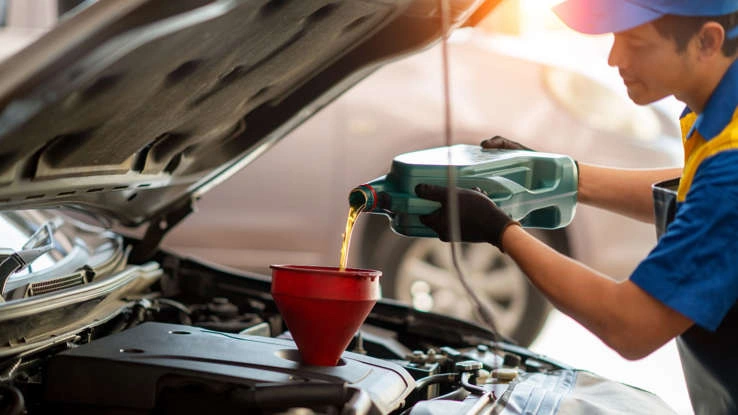Keeping your car in top shape is essential for safety, longevity, and cost efficiency. However, with so much misinformation floating around, it’s easy to fall for car maintenance myths that could end up doing more harm than good. From outdated advice to misleading tips, it’s time to separate fact from fiction.
Here are 10 common car maintenance myths you need to stop believing.
1. You Must Change Your Oil Every 3,000 Miles

One of the most persistent myths is that you need to change your oil every 3,000 miles. While this was true for older vehicles, modern cars have more efficient engines and high-quality oils that can last much longer.
✅ Fact: Most vehicles today only need an oil change every 5,000 to 7,500 miles. Some synthetic oils even last up to 10,000 miles. Always check your owner’s manual for the recommended oil change intervals.
2. Premium Gas Improves Performance in Any Car
Some people believe that using premium gasoline will make their car run better or last longer, even if their vehicle doesn’t require it.
✅ Fact: Unless your car specifically requires premium fuel (usually high-performance or turbocharged engines), using it in a regular engine won’t improve performance or fuel efficiency. Stick to the fuel grade recommended in your manual.
3. You Should Warm Up Your Car Before Driving in Cold Weather
Many drivers let their cars idle for several minutes on cold mornings, believing it protects the engine.
✅ Fact: Modern engines are designed to warm up while driving. Idling for too long wastes fuel and increases emissions. Instead, start your car, wait 30 seconds, and drive gently until the engine reaches operating temperature.
4. Washing Your Car With Dish Soap is Fine
Dish soap is great for cutting grease in the kitchen, so it must be good for your car too, right? Wrong.
✅ Fact: Dish soap strips protective wax from your car’s paint, making it more vulnerable to scratches and fading. Use automotive soap designed to clean while preserving your car’s finish.
5. Tire Pressure Should Match the Number on the Tire
The number printed on the side of your tire isn’t the recommended pressure—it’s the maximum pressure the tire can handle.
✅ Fact: Always inflate your tires to the pressure recommended by your vehicle manufacturer, usually found on a sticker inside the driver’s door or in your owner’s manual. Incorrect pressure can lead to poor fuel economy, uneven wear, and unsafe driving conditions.
6. You Must Replace All Four Tires at the Same Time
While it’s ideal for even wear, it’s not always necessary to replace all four tires simultaneously.
✅ Fact: If only one or two tires are worn, you can replace just those. However, on all-wheel drive (AWD) vehicles, mismatched tires can cause drivetrain issues, so replacing all four may be necessary. Always consult your mechanic.
7. A Battery Will Recharge Fully After a Short Drive
If your car battery dies, a short drive around the block won’t fully recharge it.
✅ Fact: A car battery needs a full charging cycle to regain power. Driving for at least 30 minutes at highway speeds or using a battery charger is the best way to restore charge.
8. Manual Transmissions Get Better Gas Mileage Than Automatics
This was true in the past, but modern automatic transmissions have become more efficient than ever.
✅ Fact: Many modern automatics now match or outperform manuals in fuel efficiency, thanks to advancements like CVT (Continuously Variable Transmission) and dual-clutch systems.
9. Your Car Will Always Pass Inspection if the Check Engine Light is Off
Just because your Check Engine Light (CEL) is off doesn’t mean your car will pass an emissions test or inspection.
✅ Fact: Some issues don’t trigger the CEL, and some drivers clear the code without fixing the problem. Mechanics use diagnostic scanners to check if there are stored error codes in the system.
10. Air Conditioning Lowers Fuel Efficiency
Many drivers believe that using the AC wastes gas, so they prefer rolling down the windows instead.
✅ Fact: While AC does use fuel, driving with the windows down at high speeds increases drag, which can be just as bad for fuel efficiency. On highways, AC is usually more efficient than open windows.
Final Thoughts
Believing in car maintenance myths can cost you money, reduce performance, and even damage your vehicle. The best way to take care of your car is to follow the manufacturer’s guidelines, consult a trusted mechanic, and stay informed with accurate information.
By debunking these 10 common car myths, you’ll ensure a smoother, safer, and more cost-effective driving experience. 🚗💨
Did any of these myths surprise you? Let us know in the comments!